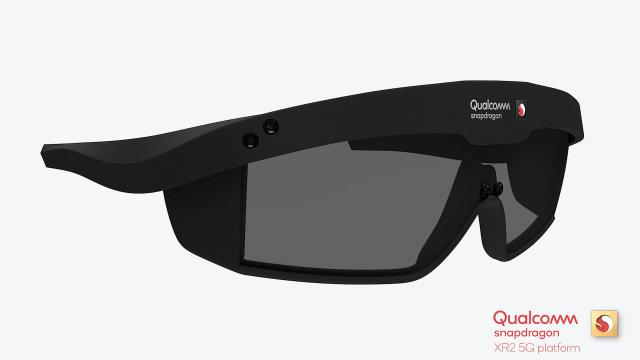Following yesterday’s look at the Snapdragon 865, Qualcomm is wrapping up its annual three-day tech summit by announcing a few other new Snapdragon chips: one for mixed reality and a couple for laptops.
Of the two different categories, the new mixed reality-focused Snapdragon XR2 is easily the more interesting of the two, as Qualcomm claims its new chip is the world’s first 5G-supported extended reality platform.
For those who aren’t big on headset jargon, extended reality is simply a catchall term used to describe augmented reality, virtual reality, and everything in between. What’s important with the Snapdragon XR2 is how Qualcomm is tailoring its chip to support next-generation headsets, especially as the boundaries between VR and AR devices continue to blur.
For the XR2, Qualcomm claims it chip sports significantly better performance, including support for headsets with 3,000 by 3,000 resolution per eye and up to 90hz refresh rates, or 360-degree video at up to 8K and 60 fps. Supporting resolutions this high would represent a massive jump up from current standalone VR devices like the Oculus Quest, which is based on a Snapdragon 835 chip from 2016 and features a resolution of 1,440 by 1,600 per eye and a refresh rate of just 72 Hz.
Additionally, to help enhance things like inside-out tracking, the Snapdragon XR2 can support integration with up to seven different cameras while also sporting a custom computer vision processor that can do things like track up to 26-different points on someone’s hand. On the audio side, the XR2 also includes the ability to pump out 3D spatial sound, to help make sure shallow or one-sided sound doesn’t ruin an otherwise immersive mixed reality experience.
Finally, with the inclusion of 5G, Qualcomm is trying to pave the way for one of the big pie-in-the-sky 5G dreams, which would be the ability to stream mixed reality content to a mobile headset from the cloud, instead of being forced to rely entirely on onboard computing power.
All this said, the same caveat that applies to the Snapdragon 865 also applies to the XR2. That’s because while all these features sound impressive and wildly futuristic, Qualcomm doesn’t have plans to make its own consumer or enterprise headsets. That means it’s going to be up to device makers to take this chip, utilise its features, and turn those things into a device you might actually want to buy, which is obviously no small feat.
Meanwhile, on the laptop side, Qualcomm is looking to bolster its portfolio of Snapdragon chips designed for use in Windows-based notebooks. So joining the Snapdragon 8cx“which is used in some form in systems like the Microsoft Surface Pro X and Samsung Galaxy Book S“is the new Snapdragon 7c and Snapdragon 8c.
The Snapdragon 7c is intended for use in entry level devices with Qualcomm claiming built-in 4G connectivity along with 25 per cent better performance and twice the battery life when compared to competing chips. (Sadly, Qualcomm refrained from specifically naming which chips it was referring to in this case).
As for the Snapdragon 8c, Qualcomm set its goal slightly higher with a chip designed for more mainstream laptops. For the Snapdragon 8c, Qualcomm claims this new chip is 50 per cent faster than the Snapdragon 850, in addition to a more powerful GPU and a slightly faster built X24 LTE modem.
However, once again, new chips are just one part of the puzzle, because after reviewing the Surface Pro X, all the performance in the world doesn’t matter if the software doesn’t play nice with your hardware and OS, which is something that continues to plague a lot of Windows on Snapdragon machines.
But at the very least, a new generation of chips could open up new possibilities for better headsets and laptops in the future. Now it’s up to device makers to make it happen, with devices featuring these chips not expected to show up until mid 2020 at the earliest.
